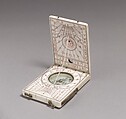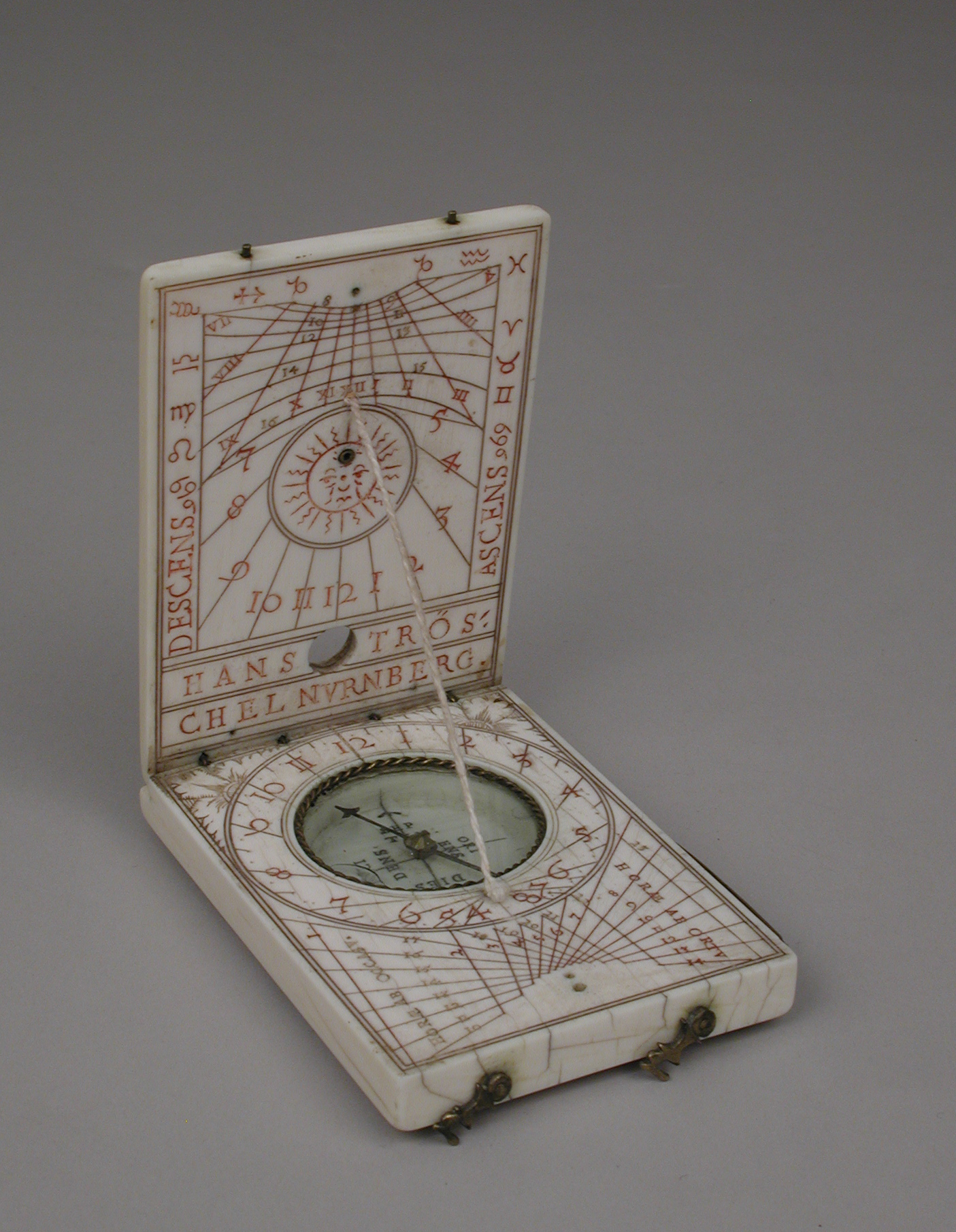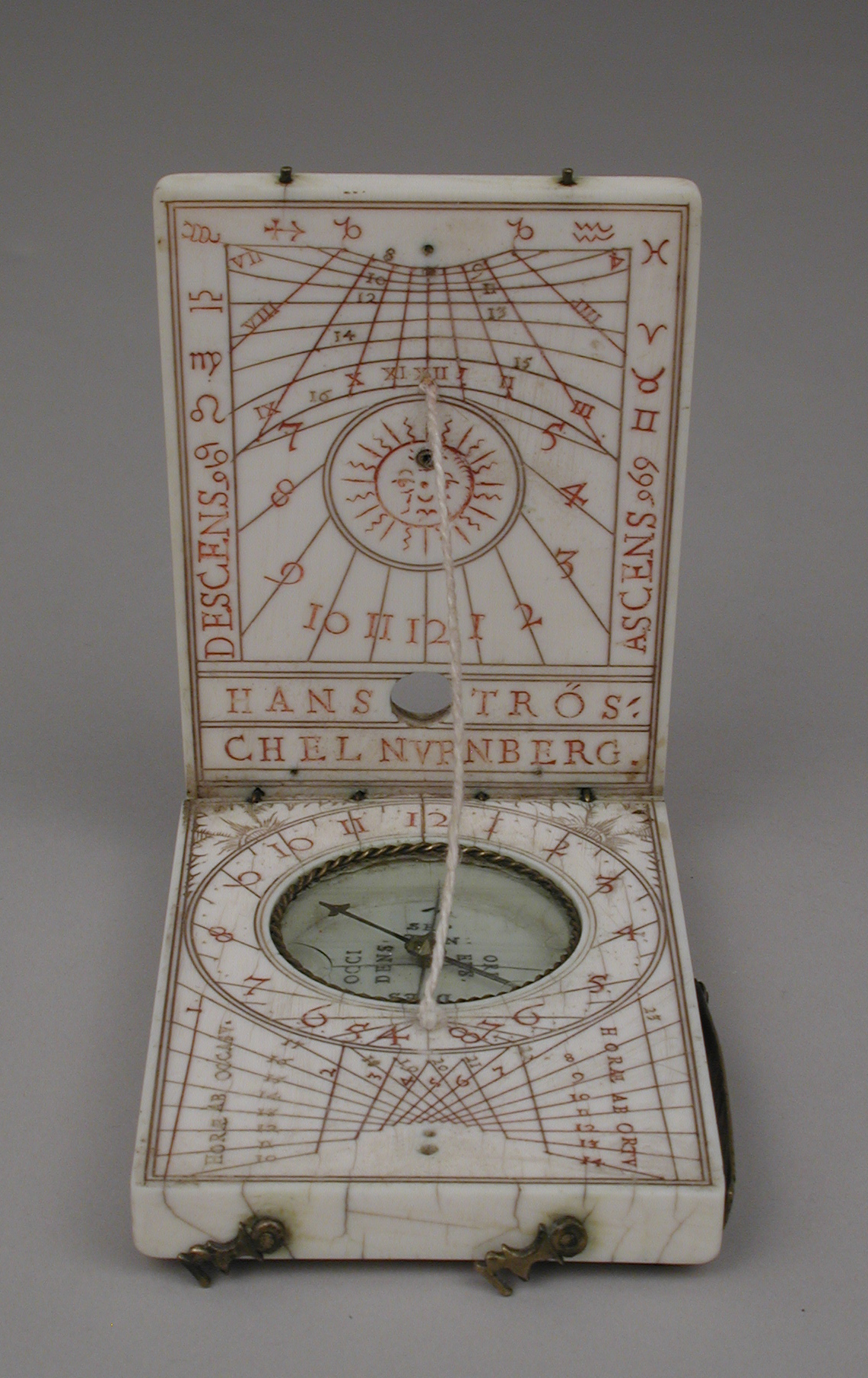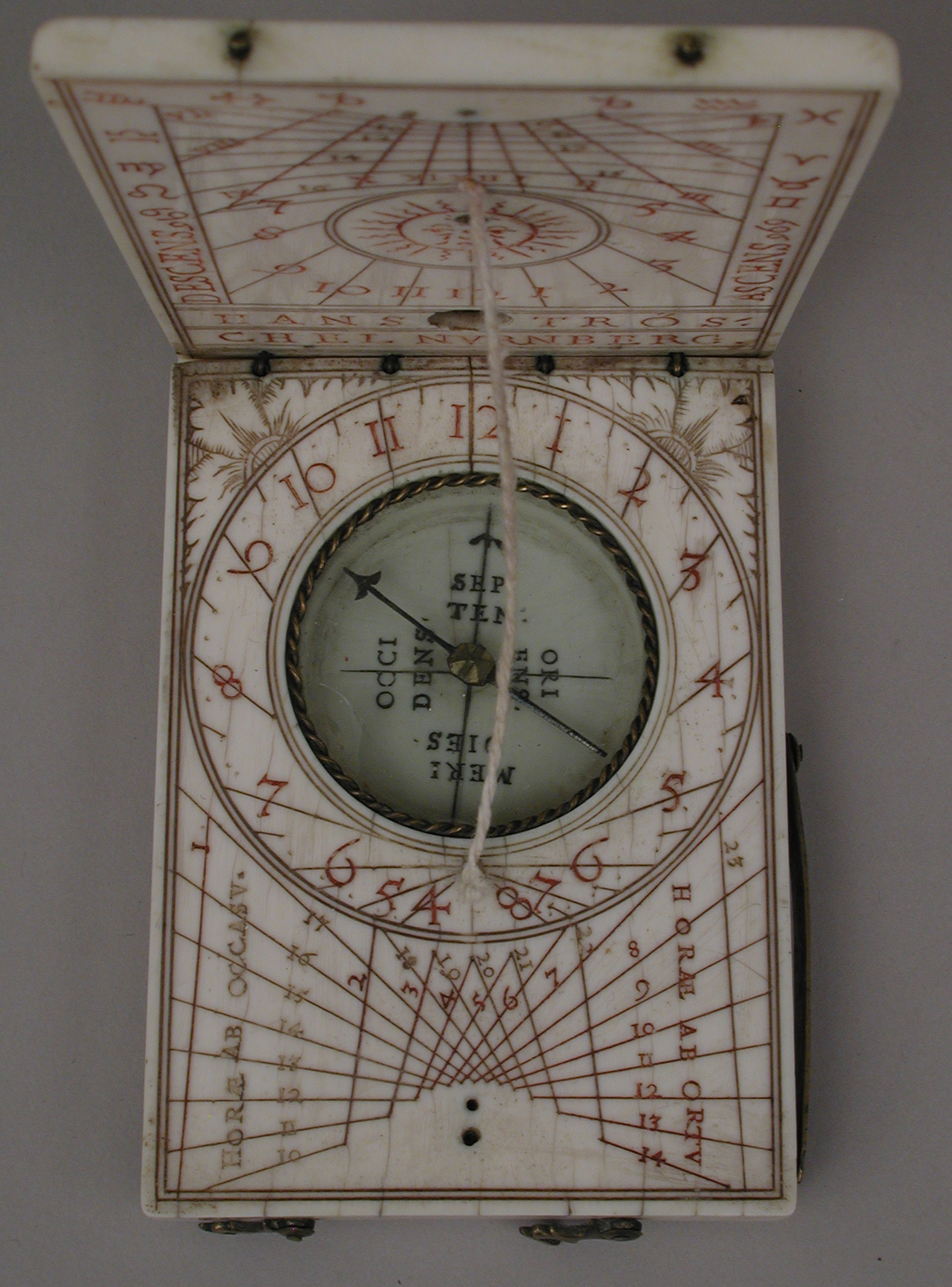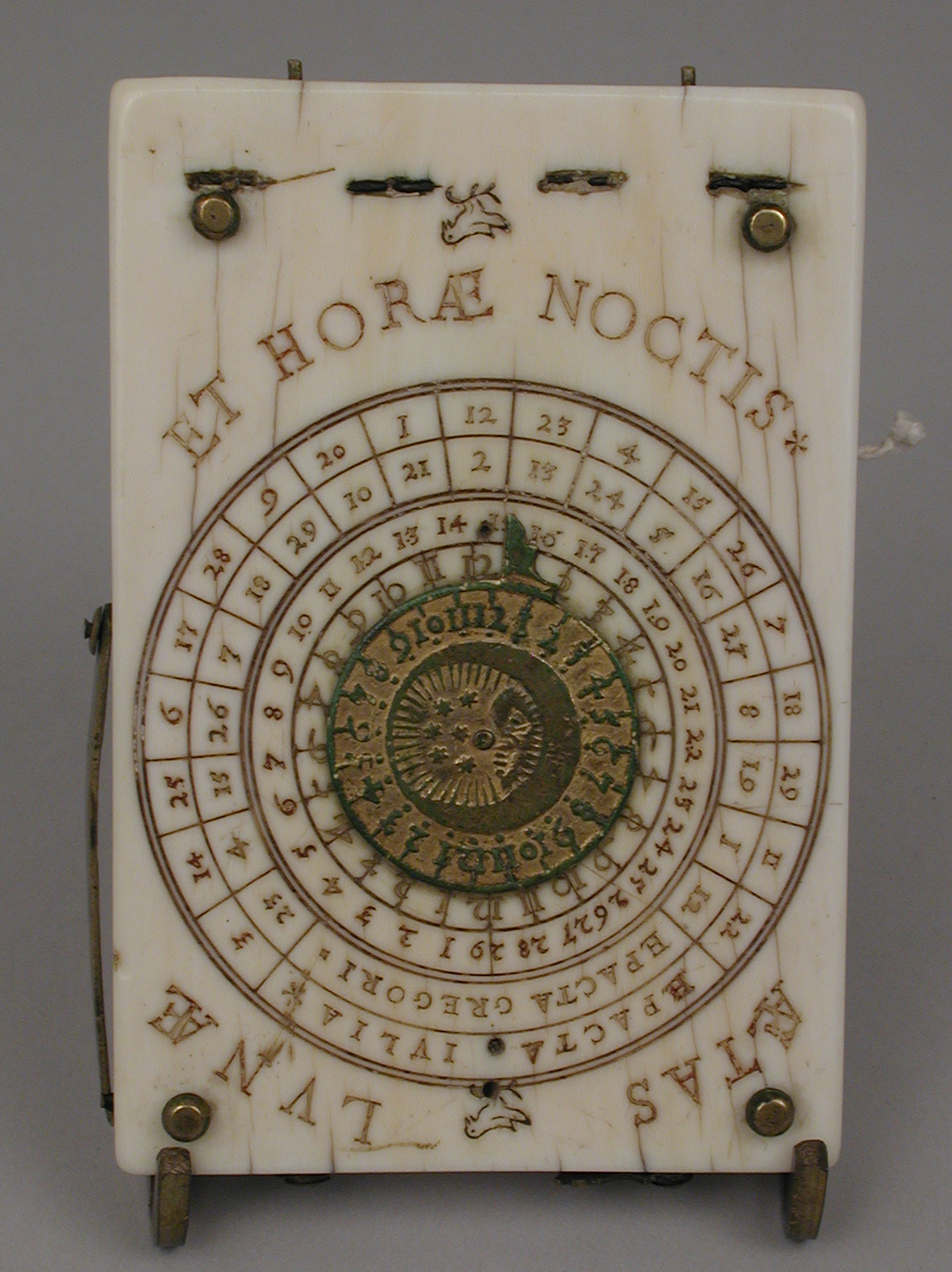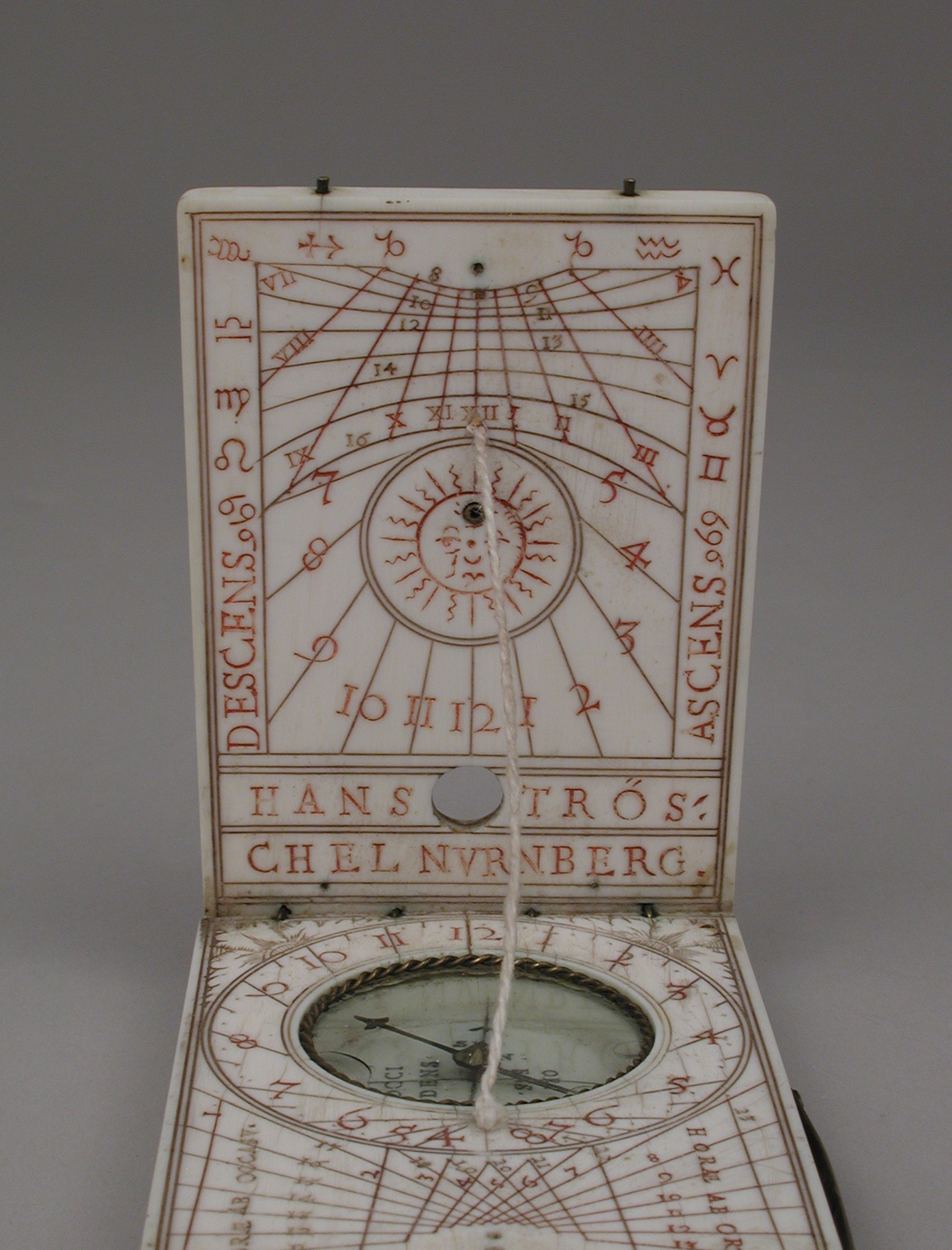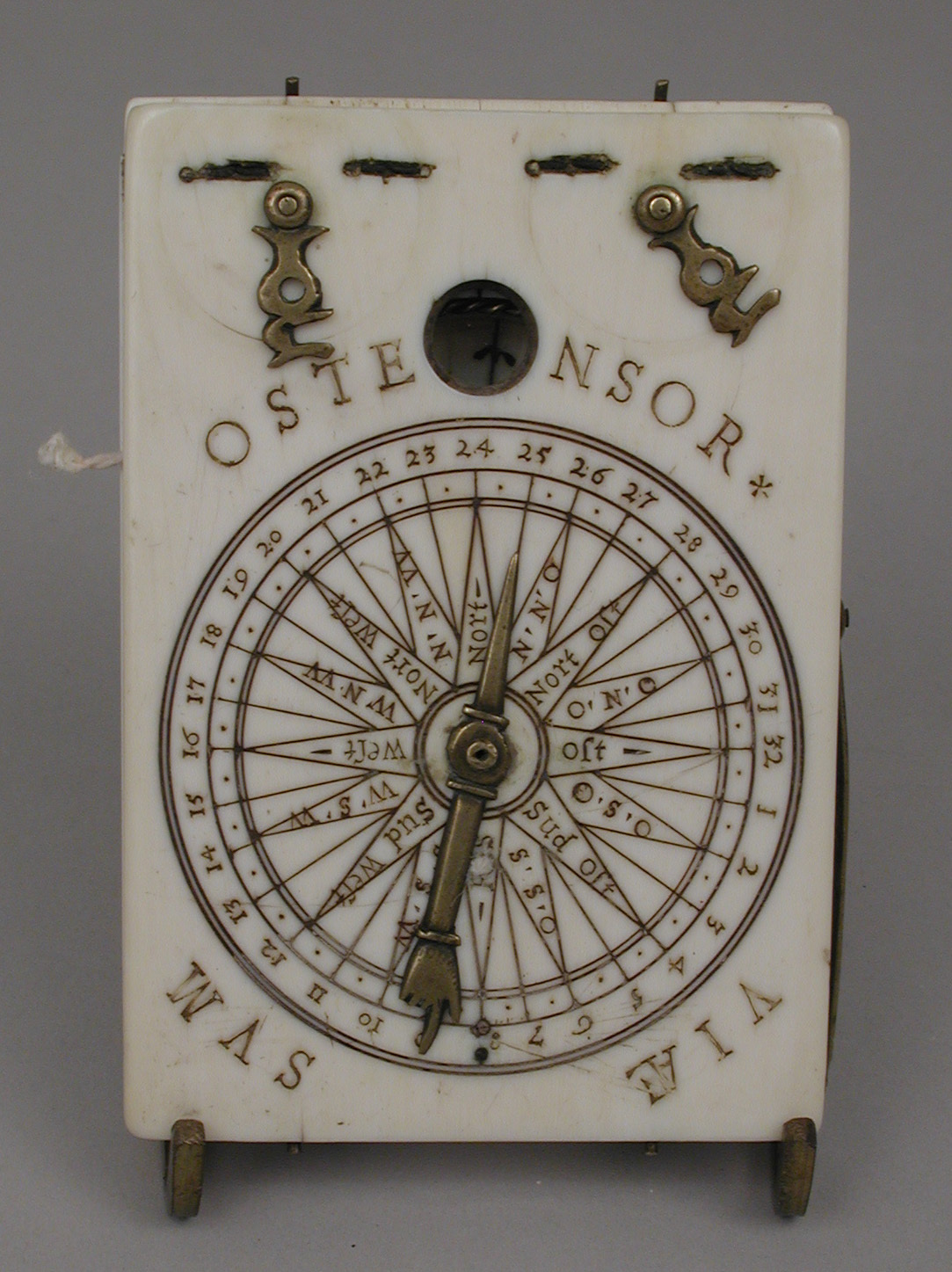Portable diptych sundial
Hans Tröschel the Elder German
Not on view
The growing production of mechanical clocks during the Renaissance had the effect of stimulating the construction of a variety of timekeeping instruments. Sundials were used for setting clocks, as well as for regulating their still inaccurate movements. Both the variety and number of sundials proliferated, but Nuremberg sundial makers specialized in small, folding, easily portable types made of ivory or wood. This dial, which can be used to tell the time in several different systems of counting the hours, was made to be used in Nuremberg's latitude of 49 1/2 degrees. Other portable sundials made in Nuremberg can be adjusted for use in several latitudes.
Due to rights restrictions, this image cannot be enlarged, viewed at full screen, or downloaded.
This artwork is meant to be viewed from right to left. Scroll left to view more.
